 Everything I've planted in the garden is a seedling I started back in early April, in old pots I found in the forest. The frost of April 29th wiped out everything I'd planted so far in the bed, at least so I thought. The beans were gone, but the corn made a comeback:
Everything I've planted in the garden is a seedling I started back in early April, in old pots I found in the forest. The frost of April 29th wiped out everything I'd planted so far in the bed, at least so I thought. The beans were gone, but the corn made a comeback: The mustard greens and chard I plant in the first bed take off:
The mustard greens and chard I plant in the first bed take off:
The chard gets a blight, and discolors, but later recovers. However the leaves remain bitter. The mustard greens are mild and excellent, and we put them in nearly every meal.
The tomato seedlings have now reached the stage where they're ready to plant:
 We're out of bagged topsoil and compost, and I'd like to try something different rather than go buy more. The girls and I go gather loam from the forest. There's a rich peaty soil that can be found in large quantities around the base of dead trees. Whether it's nutricious or not I don't know, but it seems to me the main difference between good potting soil and average dirt is loft. There's a lightness, a fluffiness, which allows roots to spread and breathe. So the girls and I each get a 5 gallon bucket full of loam and dump it all in the wheelbarrow.
We're out of bagged topsoil and compost, and I'd like to try something different rather than go buy more. The girls and I go gather loam from the forest. There's a rich peaty soil that can be found in large quantities around the base of dead trees. Whether it's nutricious or not I don't know, but it seems to me the main difference between good potting soil and average dirt is loft. There's a lightness, a fluffiness, which allows roots to spread and breathe. So the girls and I each get a 5 gallon bucket full of loam and dump it all in the wheelbarrow.There's a pasture up at the top of the hill from us. I take my backpack and we walk up our creek to its source. The spring is mostly dried up now, it's no longer flowing. On top of the hill at the edge of the woods is an almost infinite supply of manure. I grab the stuff that's old and composted - it has a dry texture and usually things are starting to grow in it. I collect a whole backpack full of manure - it's surprisingly heavy - and hike it down to the garden. I dump this also in the wheelbarrow and we stir it around with the loam.
This 50/50 mix of loam and composted manure (totally free!) is what I use to plant the tomatoes. I first cut out two beds (scrape clear the concrete footers and shape the edges of the beds), then till with the spading fork. There's very little weeding necessary. As I till the spading fork tends to get tangled up with weeds which I can throw somewhere else. I don't encounter any stubborn roots. But there's still a lot of broken crockery and other junk from the fire.
I take the hoe and cut two troughs down the length of each bed. I plant the tomatoes about 18" apart in both troughs. I have a few metal coils, and for the rest I use charred stakes from the woodpile:
 Here's a close-up of a planted tomato. Surrounding it are little clay lumps forming a U on the downslope side of the bed, to help water pool when it falls:
Here's a close-up of a planted tomato. Surrounding it are little clay lumps forming a U on the downslope side of the bed, to help water pool when it falls:
I water the garden about 4 to 5 in the afternoon. I feel like if I water in the morning, most of it gets evaporated by the sun. Likewise at noon. And I worry if I water too late in the evening, the plants' leaves won't get dried out by the sun and they'll head into the night wet and cold and limp. So I imagine 4 to 5 is the best time. The book HOW TO GROW MORE VEGETABLES recommends this. The garden gets blasted with sun from about 9:00 am to 6:00 pm.
Water pipes were run underground to the middle west edge of the garden (this was an old homesite), and I find the place where it sprays out when I open the valve. We hope to ultimately run a whole network of soaker hoses throughout the beds at some point. This way when we want to water, all we have to do is open a valve, instead of dragging a hose from place to place. And also it's better to water plants through seepage beneath the leaves, than bombarding them with a synthetic rain day after day.
I never got a chance to plant potatoes, so I build an aboveground potato bin. I don't have seed potatoes, just regular potatoes that I've let sprout in a paper bag in the dark. I cut the potatoes down into chunks, each with a couple of eyes, and let them dry a day, before I plant. The potato bin is something I get from AN INTRODUCTION TO PERMACULTURE. Instead of wood I use old concrete blocks to form an enclosure. I put in a mass of rotting leaves and leaf mold. I set the eyes in. Then cover it all with straw. The directions state that as the plants sprout and rise, and break the surface, you keep building up your enclosure and burying them higher with straw. And when the potatoes are ready in the fall, instead of digging through hard soil you just reach into the straw and pick them out.
Here are my bins:
 You can see a little sprout coming up in the photo. I actually had to wait three weeks for that. I'd given up on the bins as a hopeless waste of time, and was sure the potatoes had rot, until I saw that sprout one day. Here's a closer shot:
You can see a little sprout coming up in the photo. I actually had to wait three weeks for that. I'd given up on the bins as a hopeless waste of time, and was sure the potatoes had rot, until I saw that sprout one day. Here's a closer shot:
Shortly after that sprouts from all the eyes started busting through. It seemed like nearly every other day I was having to pile the straw higher.
As far as our mail-order trees go, the persimmons have done nothing, the redbuds have put out lots of tiny red leaves; one of our sumacs is getting big buds (the other was run over by the dumptruck that delivered the gravel); the juneberries have buds, and the mulberry is just a little bare twig in the ground. The blueberries up at the swales don't look good. They really get blasted up there. But the blueberries down across from the garden are fine. Our peaches are hanging on, the foliage is turning form purple to green - might be a bad sign, I don't know.
Giant puffball mushrooms have sprouted up everywhere we've cleared with the weedwhacker. I wish I wasn't always so exhausted from working - I'd gather them and use them in our meals. Some are as big as footballs. Here's a pic: Our five little baby birds have grown up into fatsos. It's amazing they can all fit in the nest. Just look at them:
Our five little baby birds have grown up into fatsos. It's amazing they can all fit in the nest. Just look at them: They chirp constantly for food whenever we enter the shed. Their parents are tearing their hair out trying to get them enough - we see both the male and female, constantly in and out, in and out, bringing them insects.
They chirp constantly for food whenever we enter the shed. Their parents are tearing their hair out trying to get them enough - we see both the male and female, constantly in and out, in and out, bringing them insects.I decide to try feeding them myself one day. The cicadas are still everywhere, and sluggish. Rachael and Brooke played this funny game when they first emerged. They'd each hold a cicada in their hand - one that was no longer white, it had gotten its colors, but was just creeping around and hadn't flied yet - and then they'd each throw their cicada and the cicada would take flight with a whirr and they'd compete to see who's cicada went the farthest.
So I take a cicada and climb up the ladder in the shed. I hold out my hand with the insect, and as soon as my hand approaches all their eyes get big, and suddenly they explode out of the nest and start flying all around the shed. Some shoot out the door. I'm dismayed at what I've done, but at the same time, it's amazing how well they can fly! They had outgrown that nest a long time ago!
That whole day was a whirl of flycatcher activity. The parents were sort of giving a crash course in living outside. They'd perch on the braces and girts of the barn, the babies sometimes sidling up to them begging. Sometimes a lone baby would fly back into the nest and sit in there by himself for an hour. But after a few days they all were gone.
Except the parents. It was no more than a week or two later that we saw the female going in and out of the shed again. I climbed up the ladder, and sure enough, 3 more eggs:

There was no way I was ever going to get a door on that shed.
A bluebird has nested in the birdhouse I brought up, and she also has 3 eggs. We laugh and call them egg wars. But the flycatcher and bluebird pay no attention to each other.
One day I catch the big black rat snake going through the grass, and he's actually getting ready to climb the tree where the bluebird's nesting, to get at her eggs. I pull his tail a couple times, and he takes off into the logs behind the shed:

I spot a scarlet tanager, a male, bright red, singing from our healthiest oak. He sounds a lot like a robin. We have a whole famliy of giant pileated woodpeckers that live here. They're as big as crows. I'll often see them shooting over the barn, or pecking at dead trees. Once swallows cruise around low over the garden. Many songbirds will perch on the coils and stakes. We need to put up a lot more birdhouses. They make a place feel so full of life, and they keep down the insects.
One afternoon we spot a huge turkey hen walking over the swales, with a whole troop of chicks toddling after her.
The nights are unbelievable when it comes to life. Treefrogs are raging in the trees. Crickets chirp. Fireflies are everywhere, flashing. Screech owls will wail, off and on through the night. Occasionally I'll hear a barred owl. The whipporwill (maniac bird), starts up right at dusk, and sometimes will sing for hour after hour after hour, at a pace that can only be described as frenetic. It is incredible what energy he puts into it. Bats start zipping around over the garden, also about dusk, scooping up tons of insects. Our garden has been virtually free of insect pests, besides two potato beetles I picked off the potatoes, as well as some neon orange larvae on the undersides of their leaves. There were a few worms in the corn, and that's it. The two great garden insects, the ladybug and praying mantis, have just showed up ever since the plants got big. We've found 2 mantids in the corn, and many types of ladybugs have come through.
But what has to be unique to this property, and must have the greatest impact on the garden, are the toads. Once the sun sets, they come out in tremendous numbers. Many live underneath the footers in the garden. During the day we can reach down through one of their holes and touch their squishy bodies. But we almost have to be careful how we walk after dark, there are so many of them. You can spot them hopping all around. They scatter all over the garden beds. The girls love to gather them and carry them around.
It all started with one toad in the pumphouse in early April, who I moved down to the creek. That night I found him back in the pumphouse, and assumed that's just where he wanted to be. But as it got warmer more and more toads started appearing, till now they're everywhere. Their holes are in the floor of the barn, they're up in the gazebo, in the pumphouse, everywhere. The girls have taken so many photos of them. I'll just post two:

Female wolf spiders, which are already big enough, are now covered in spiderlings. Their bodies are now so huge with this mass of what must be hundreds of spiderlings, that they look more like tarantulas. They're also now slow-moving, like tarantulas. You want an intimidating-looking spider, this is it. We see them all the time. And one night something horrible happens. Brooke is out catching toads outside Rachael's tent. She says, "Hey Rachael, want a toad?" and she throws one into her tent. But it's not a toad at all. It's a wolf spider covered in spiderlings, and the spiderlings scatter. They are now all over her tent, and Rachael's crying. We have to leave her tent open for a day for them all to clear out.
Our fireplace has been taken over by wasps. They nest in the concrete blocks. But they don't bother us. They come and go while we sit in there and are very peaceful. But Patty's uncomfortable with it. She's allergic to stings. She was stung by something when we were up camping in the mountains one time and had a severe allergic reaction. But the wasps aren't going anywhere. They've also nested in the pumphouse. They could have a beneficial impact on the insect population, though they are themselves nuissances.
The ticks seem to thankfully be on the wane. But I'm noticing some deerflies now, orbiting. They give a painful bite. I've moved up to the gazebo, and am no longer in a tent. I have power up there, so I can run the fan and light. I run the fan all night to keep the biting gnats and mosquitoes down, which always come out at evening, even in the desert.
Here's a few more shots of the garden as of mid-June. Here's the broccoli:

Squash flowering:












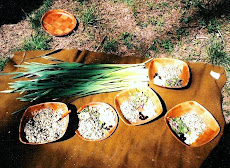









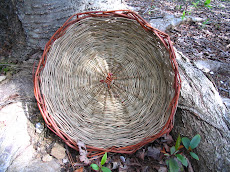



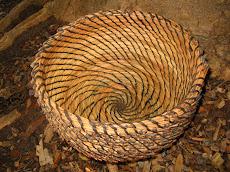



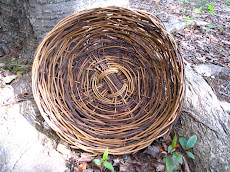

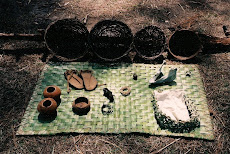


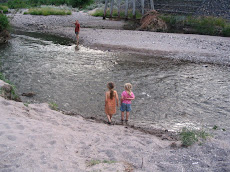

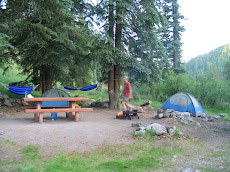


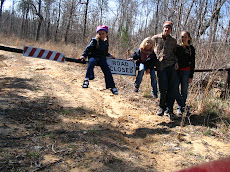






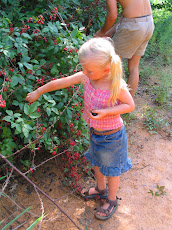







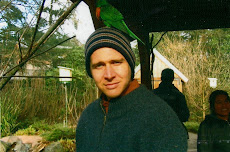
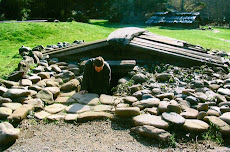

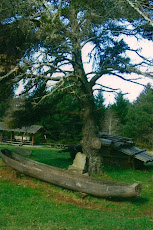



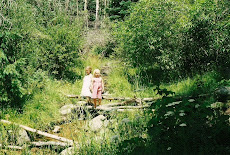

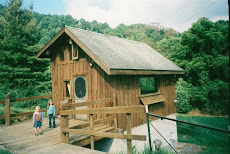


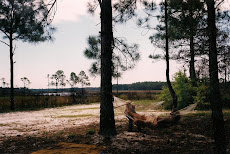

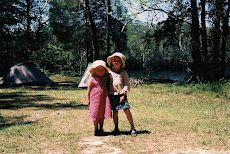.jpg)

.jpg)

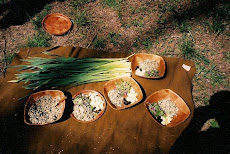
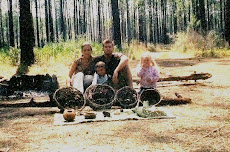
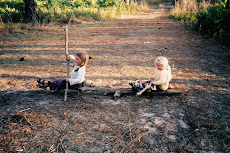.jpg)

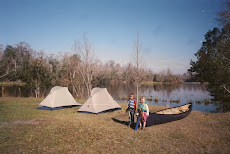

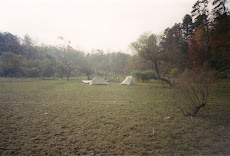
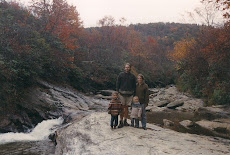
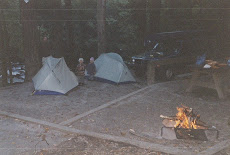


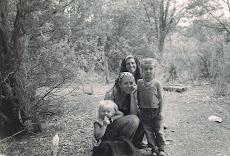.jpg)
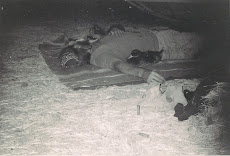.jpg)
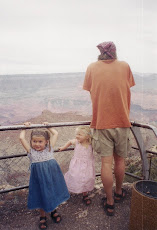
.jpg)
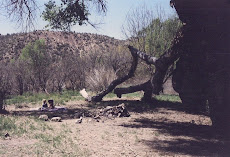.jpg)
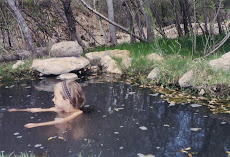
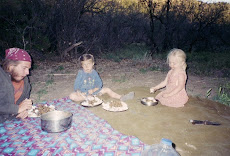.jpg)
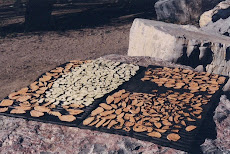
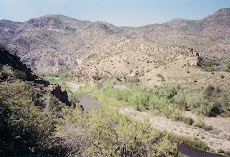.jpg)


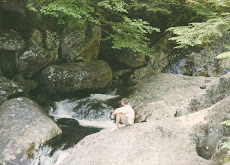

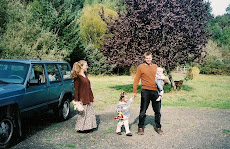
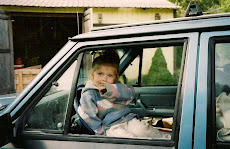







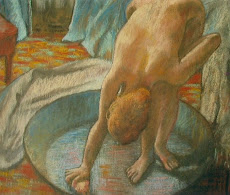

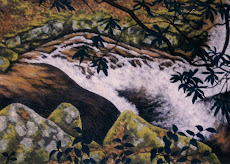






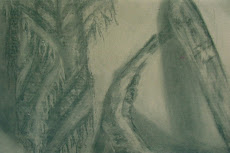

1 comment:
Ohhh the TOADS!!! Most evenings they were deafening! =|
Garden looks awesome!!
Post a Comment